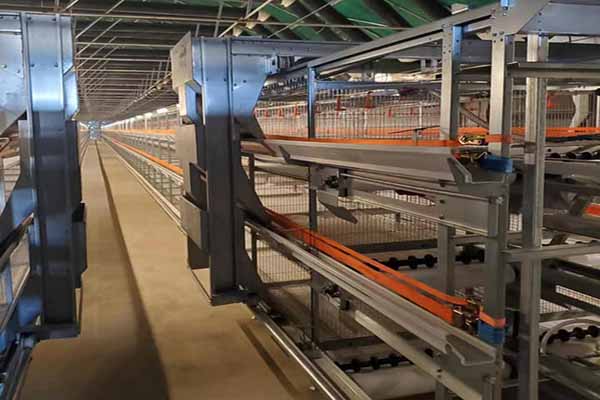Kenya Chicken Farms Embrace Automated Equipment for Enhanced Efficiency
Time : 2025-06-26
Kenya, known for its diverse agricultural landscape, has witnessed a significant transformation in its poultry sector. The adoption of automated equipment in chicken farms has revolutionized the industry, leading to increased efficiency and productivity. This article delves into how Kenya’s chicken farms have capitalized on the benefits of automated technology to enhance their operations.
Introduction
The poultry industry plays a crucial role in Kenya’s agriculture sector, providing livelihoods for thousands of farmers and contributing significantly to the national economy. With the increasing demand for poultry products, Kenyan chicken farms have been striving to improve their processes and yield. The integration of automated equipment has been a game-changer, offering several advantages that have propelled the industry forward.
The Shift to Automation
Kenyan chicken farms have progressively shifted towards automation to keep pace with the industry’s demands. This transition has been driven by the need to reduce labor costs, increase productivity, and maintain high-quality standards. Let’s explore some of the key areas where automation has made a substantial impact.
1. Feeding Systems
Automatic feeding systems have become integral to Kenyan chicken farms. These systems ensure precise and consistent feeding, optimizing the health and growth of the birds. The automated feeders can be programmed to dispense the exact amount of feed at regular intervals, reducing the need for manual intervention.
Benefits:
– Precision: Automated feeders provide accurate feed distribution, preventing under or overfeeding.
– Efficiency: The systems reduce the time and labor required for feeding, allowing farmers to focus on other tasks.
– Cost Reduction: By eliminating the need for manual feeding, farms can cut down on labor costs.
2. Water Supply
Water is vital for the health and well-being of chickens. Automated water systems ensure a continuous and clean supply of water, preventing dehydration and maintaining optimal health. These systems are designed to monitor water levels and replenish them automatically when necessary.
Benefits:
– Hygiene: Automated water systems minimize the risk of contamination.
– Health: Regular access to clean water contributes to the overall health and well-being of the birds.
– Convenience: Farmers can rest assured that the chickens have access to water at all times.
3. Environmental Control
Automated environmental control systems have been a significant advancement for Kenyan chicken farms. These systems regulate temperature, humidity, and air quality, creating an optimal environment for chickens to thrive. Sensors and programmable logic controllers (PLCs) are used to adjust the environment in real-time.
Benefits:
– Comfort: The systems maintain a comfortable and stress-free environment for the chickens.
– Productivity: An optimal environment can lead to better growth rates and egg production.
– Energy Efficiency: Automated systems can optimize energy use, reducing costs.
4. Health Monitoring
Automated health monitoring systems have revolutionized how chicken farms in Kenya manage the health of their birds. These systems use IoT (Internet of Things) technology to track vital signs such as temperature, respiration rate, and activity levels. This data helps farmers detect potential health issues early on.
Benefits:
– Early Detection: Automated monitoring allows for the early detection of illnesses, preventing outbreaks.
– Precision: Data-driven decisions can lead to more effective treatment and management of diseases.
– Efficiency: Automated systems reduce the need for manual inspections, saving time and labor.
Challenges and Solutions
While the adoption of automated equipment offers numerous benefits, it also comes with its own set of challenges. One of the primary challenges is the initial cost of investment. However, with the right approach, these challenges can be mitigated.
Challenges:
– High Initial Costs: The installation and operation of automated systems can be expensive.
– Training and Adaptation: Farmers need to be trained to use the new technology effectively.
– Technical Support: Reliable technical support is essential for maintaining the systems.
Solutions:
– Government Subsidies: The Kenyan government can provide subsidies to encourage the adoption of automated technology.
– Training Programs: Farmer training programs can help farmers adapt to new technology.
– Support Networks: Establishing support networks can provide farmers with the necessary resources and assistance.
Conclusion
The integration of automated equipment in Kenya’s chicken farms has been a game-changer for the industry. The benefits of increased efficiency, productivity, and quality are undeniable. As technology continues to evolve, it is expected that more Kenyan chicken farms will embrace automation, propelling the industry towards new heights.












